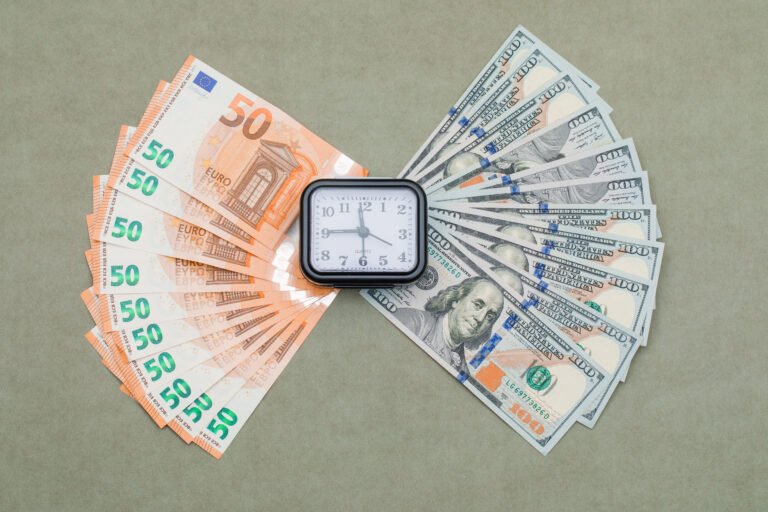Envelope Budget System Tool
Organize your spending by category using the envelope budget method
The envelope budgeting system is a proven method for managing spending by assigning specific amounts of cash to different expense categories. It promotes intentional spending and helps prevent overspending by creating clear boundaries for each area of your budget. While traditionally done with physical envelopes, the same principle applies digitally — giving you a structured, visual approach to managing money. This method is especially effective for variable expenses like groceries, entertainment, or dining out. By separating funds and tracking usage in real time, you gain better control, reduce financial anxiety, and build a more disciplined approach to everyday money management.
Benefits of
Using the Envelope Budgeting Method
Applying this budgeting approach helps you:
Advanced Envelope Budget System
Envelope Breakdown
Meet Carla
Example Scenario
Carla is a freelance designer with variable income. To stay in control of her spending, she turns to the envelope budgeting method to set clear limits for each major expense category.
Envelope Breakdown:
| Category | Envelope Amount |
|---|---|
| Rent | $1,500 |
| Groceries | $600 |
| Gas | $250 |
| Dining Out | $300 |
| Savings | $800 |
| Miscellaneous | $750 |
➡️ Total Budgeted: $4,200
Carla sets aside cash for each category and tracks her spending manually each week. If one envelope runs out, she knows it’s time to pause spending in that area.
💡 This method helps Carla stay intentional and avoid emotional overspending. With visual limits and structured categories, she builds stronger money habits and keeps her finances balanced — even with an unpredictable income.
How the Envelope Budget System Tool Works – Organize Spending with Clear Limits
✅ 1. Break Down Your Monthly Income
Start by entering your total monthly income. This gives you a foundation to allocate funds across specific spending categories.
- Ideal for cash flow visibility
- Encourages intentional spending
✅ 2. Create Envelopes by Category
List each category you spend money on, such as:
- Rent or mortgage
- Groceries
- Gas and transportation
- Entertainment
- Savings
Assign a spending limit (envelope amount) to each based on your priorities and past habits.
Formula:
Total Allocated = Sum of All Envelope Limits
Ensure the total does not exceed your monthly income.
✅ 3. Track Spending Per Envelope
As you spend, track how much is used from each envelope. Once a category’s budget is depleted, pause spending in that area until next month.
💡 This method brings structure and discipline to your budgeting. By assigning limits and staying within them, you build smarter habits, reduce overspending, and stay fully in control of your financial life.
Why the Envelope System Falls Apart — And How to Make It Work in Real Life
The envelope budgeting method is one of the oldest — and most effective — ways to manage spending. But in the digital age, it’s easy to misuse or abandon. Whether you’re using physical envelopes or a digital tool, here’s why the system often fails — and how to get it back on track.
You Skip Key Spending Categories
Leaving out important or irregular expenses means you’ll keep reaching for your card.
Fix it: List all categories — even seasonal or occasional ones — and assign every dollar a purpose before the month begins.
You Treat It Like a Suggestion, Not a System
Dipping into other envelopes or ignoring limits breaks the structure.
Fix it: Stick to your categories. If one runs out, don’t borrow — either adjust next month or cut spending elsewhere.
You Don’t Track Digital Transactions
Most people use cards or apps — but forget to update their envelopes when money is spent.
Fix it: Use a digital envelope tracker or update your totals daily. Sync spending with your budget in real time.
You Make It Too Complicated
Too many envelopes or unclear rules can lead to confusion and frustration.
Fix it: Start with 5–7 main categories. Keep it simple until the habit is strong.
You Forget to Refill Envelopes Monthly
Missing the reset at the start of the month throws the whole system off.
Fix it: Set a specific date each month to review, reset, and refill envelopes based on your income and spending.
You Don’t Involve Your Household
If you budget alone but share spending, the system breaks down fast.
Fix it: Communicate with your partner or family, and agree on how funds are split and tracked.
💡 Final Thoughts
The envelope system gives you full control over your spending — but only if it’s applied consistently. Keep it simple, stay disciplined, and track your progress. Whether it’s paper or digital, envelope budgeting brings intentionality back to every dollar.




